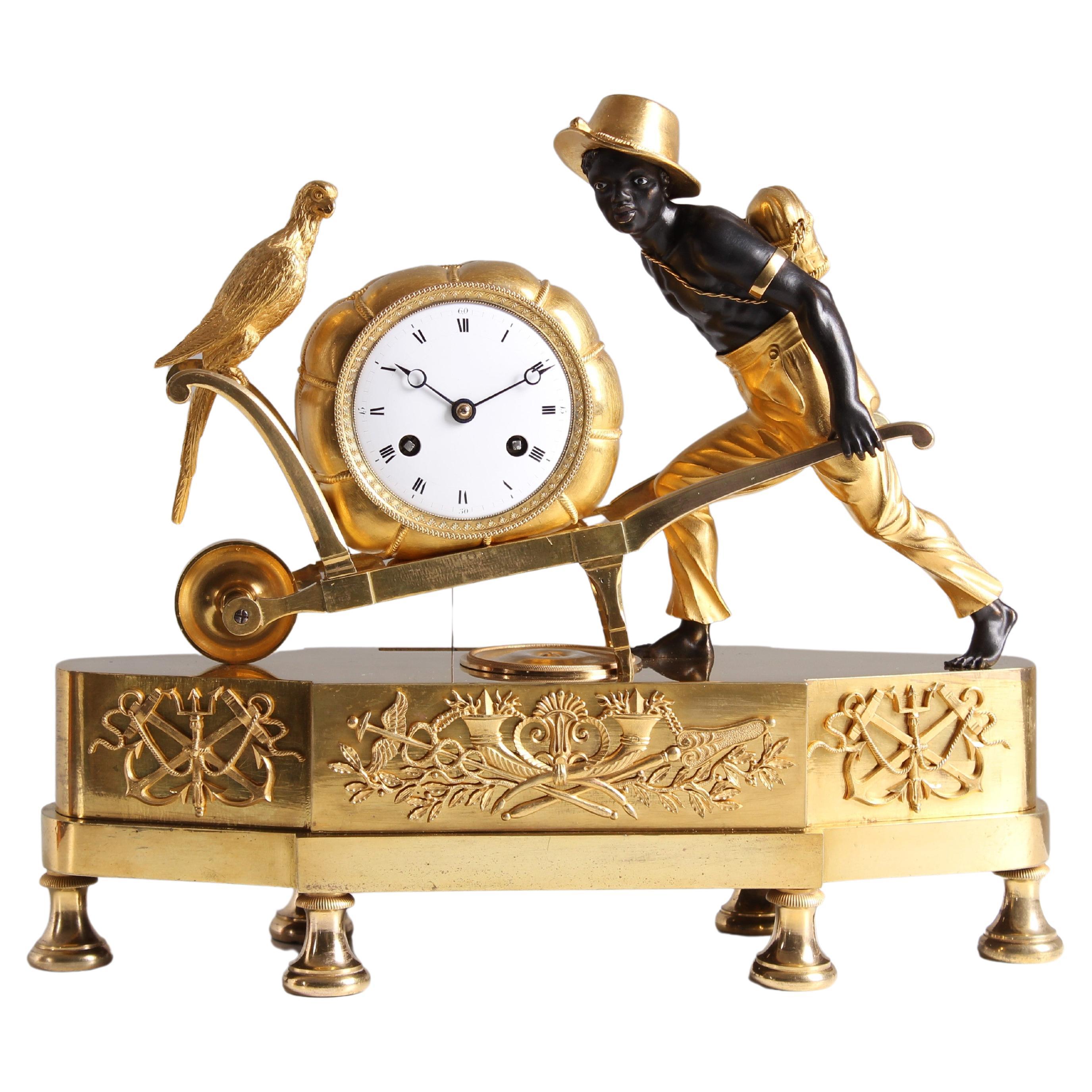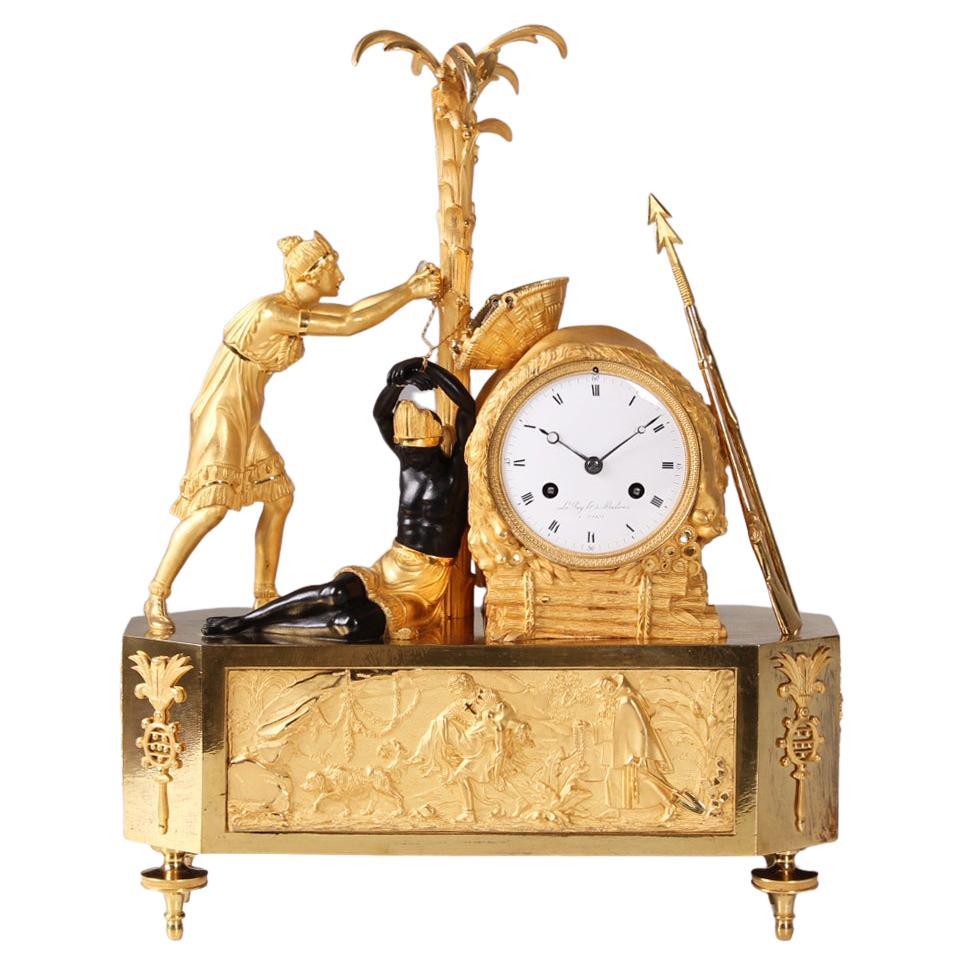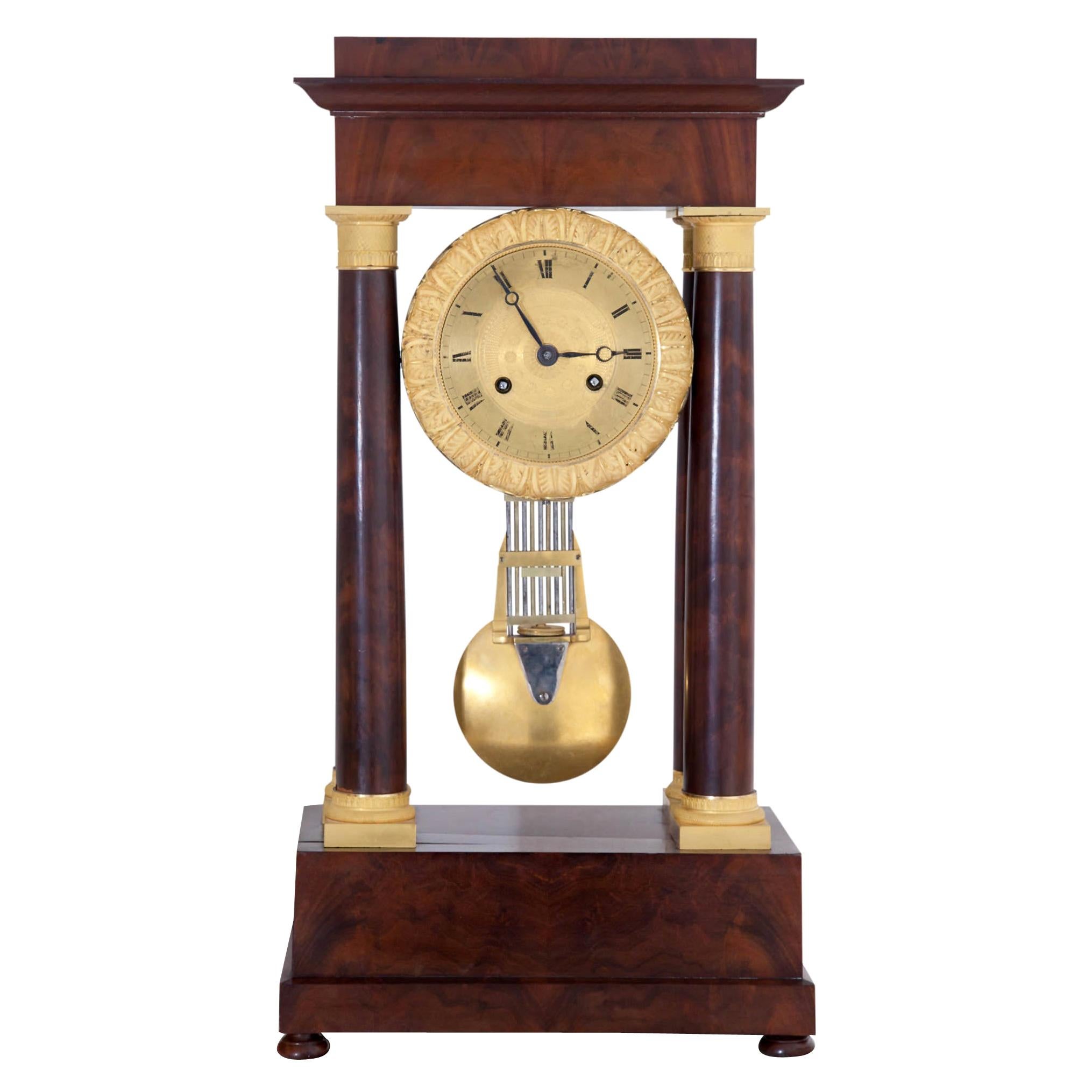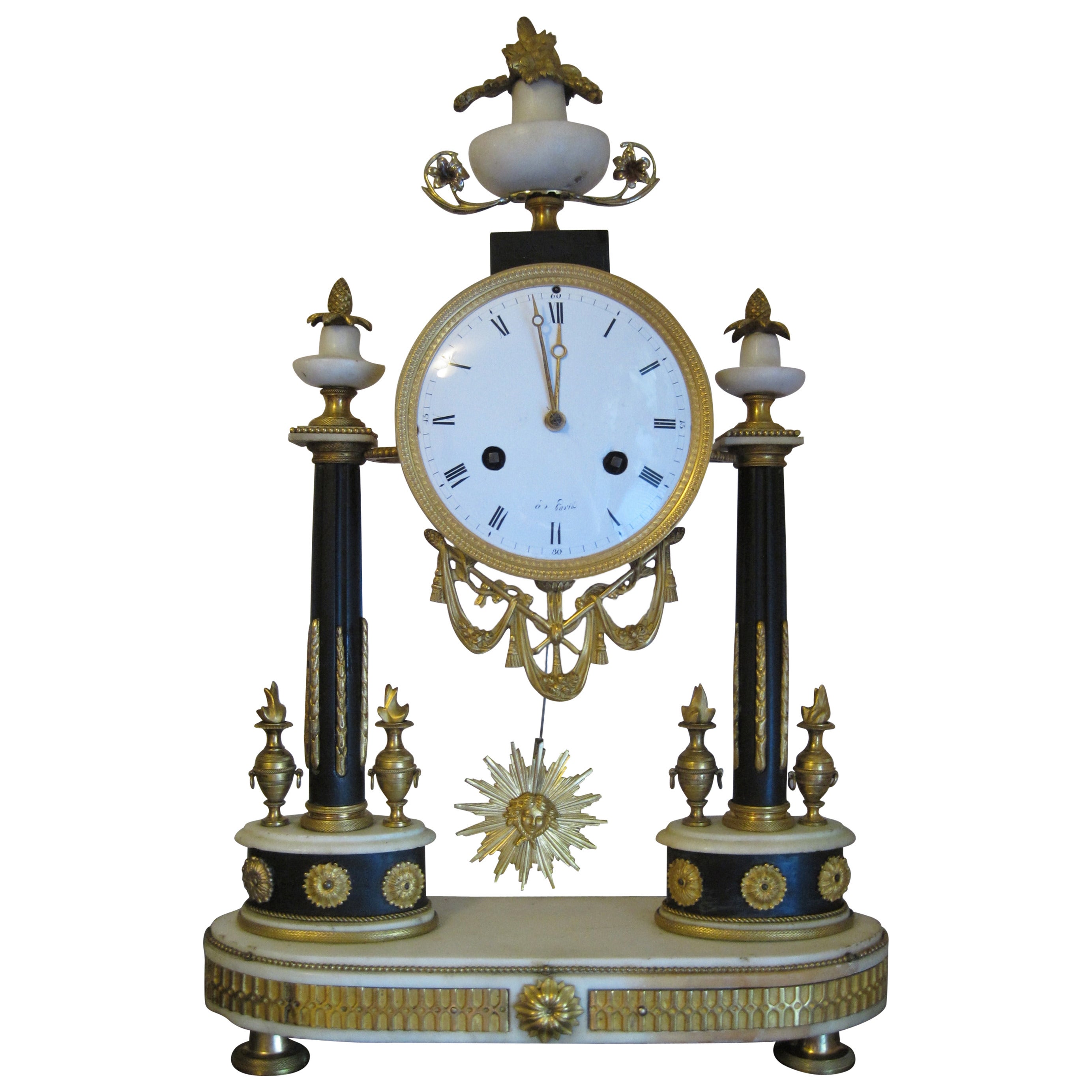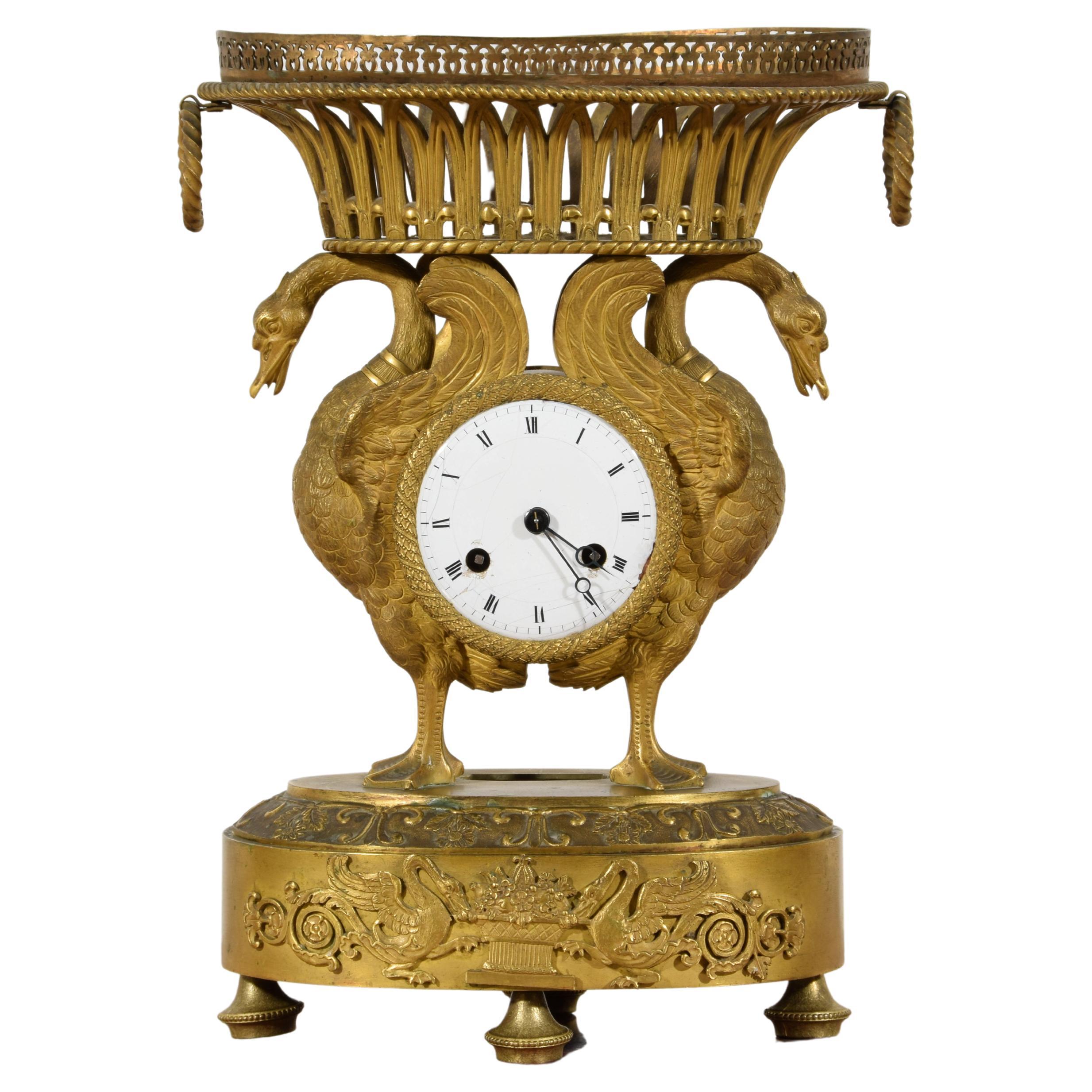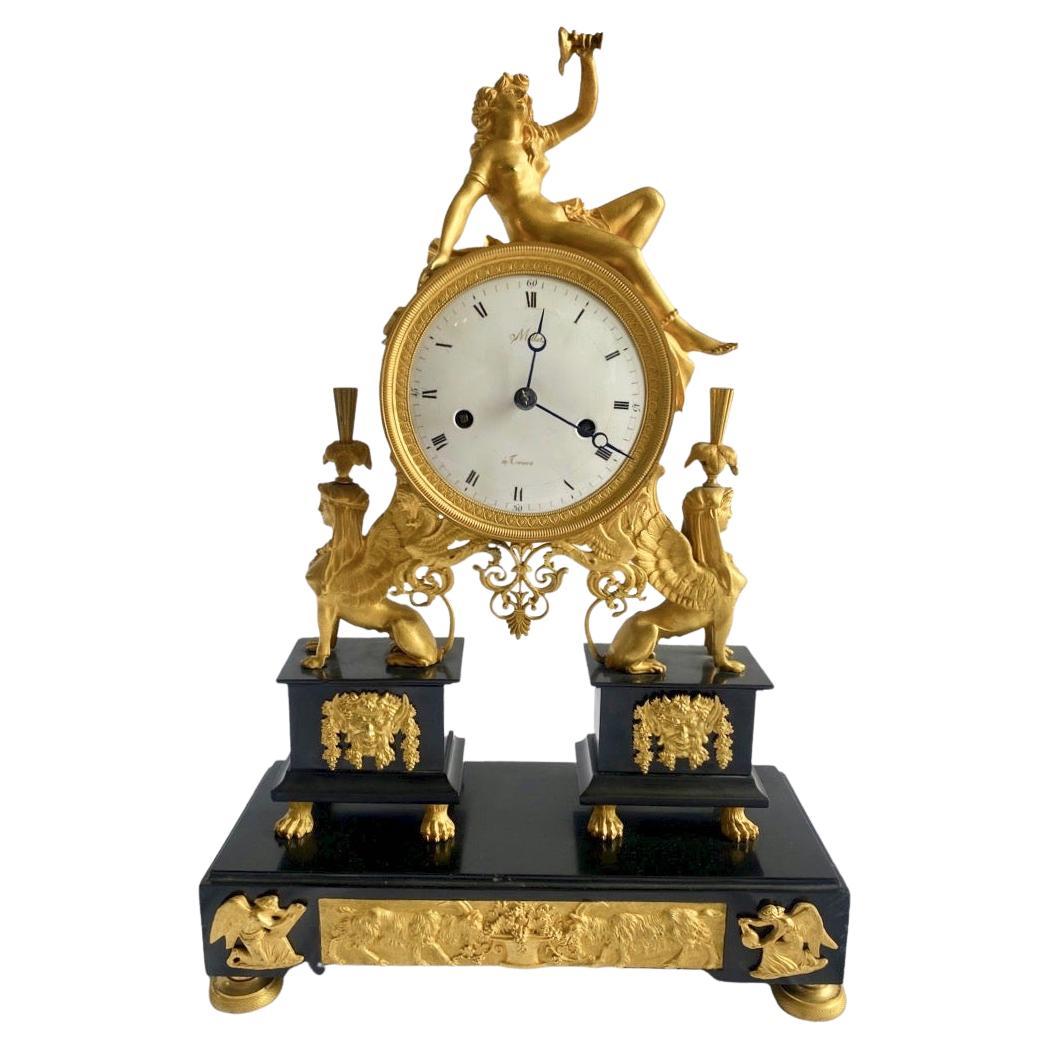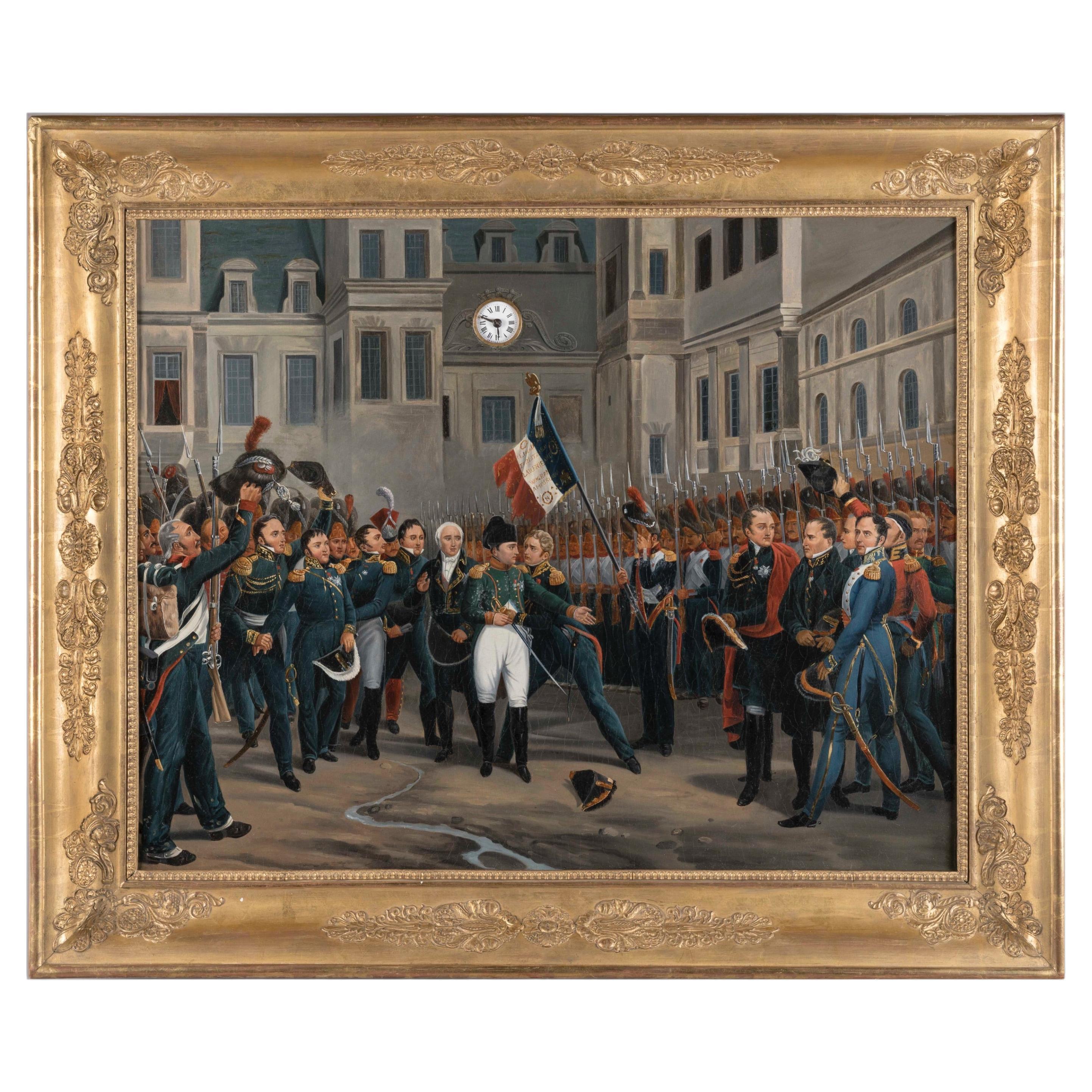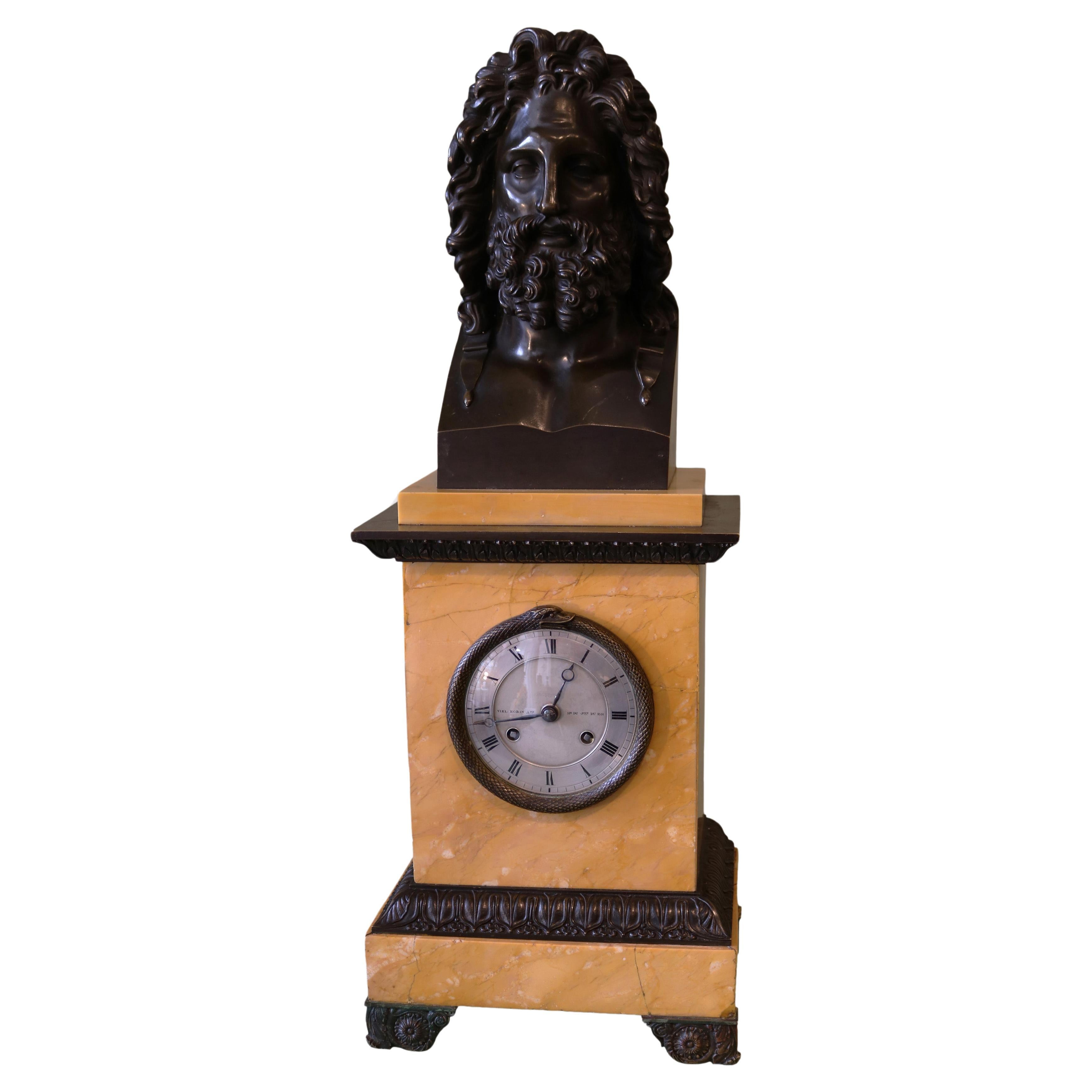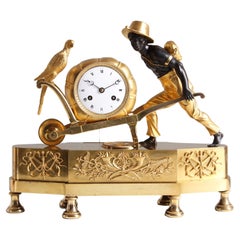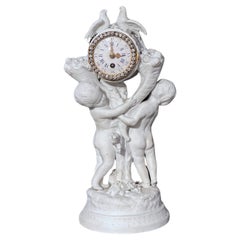
Rare and Decorative Early 19th Century Table Clock, France, circa 1810
View Similar Items
1 of 9
Rare and Decorative Early 19th Century Table Clock, France, circa 1810
About the Item
- Dimensions:Height: 20.48 in (52 cm)Width: 13 in (33 cm)Depth: 3.55 in (9 cm)
- Style:Empire (Of the Period)
- Materials and Techniques:
- Place of Origin:
- Period:
- Date of Manufacture:1810
- Condition:Wear consistent with age and use.
- Seller Location:Muenster, DE
- Reference Number:Seller: PS1121stDibs: LU181536397653
You May Also Like
- Early 19th Century Mantel Clock, Firegilt Bronze, Paris circa 1810Located in Greven, DEVery rare "Au Bon Sauvage" mantel clock France Fire-gilt and patinated bronze Empire around 1810 Dimensions: H x W x D: 34 x 41 x 13 cm Description: Extremely rare French bronze m...Category
Antique Early 19th Century French Empire Mantel Clocks
MaterialsBronze
- Early 19th Century Ormolu Mantel Clock, Atala freeing Chactas, Paris, circa 1810Located in Greven, DEMantel Clock "Atala and Chactas" Paris Bronze (fire-gilt and patinated), enamel Empire around 1810 Dimensions: H x W x D: 40 x 32 x 11 cm Description: Very rare and extremely high quality French mantel clock, so-called Pendule Au Bon Sauvage. Depicted are scenes from the love story "Atala or the love of two savages in the desert" written by Francois René Vicomte de Chateaubriand in 1801. At the beginning of the 19th century, this was probably the most famous love story in Europe, but today it has been forgotten. The story, set in present-day Louisiana (USA), is roughly rewritten about the forbidden love between Chactas, a young Indian, and Atala, the beautiful daughter of a Spaniard. Chactas is captured in a battle between two Indian tribes, chained to a palm tree and is to be sacrificed. Atala wants to save his life and convert him to Christianity. She unties him from the palm tree at night and they flee together into the wilderness of North America. Their love for each other grows stronger and stronger and they have prospects for a future together. The story takes a tragic turn when Atala, who must remain a virgin due to a vow made by her mother, can no longer withstand the conflict of her feelings and commits suicide. The main group of characters thus shows Chacta's liberation through Atala. Atala is leaning against a pile of logs. The animal fur thrown over the logs and the weapons leaning against the stack on the right give the impression of a night camp. The bronze is of rarely beautiful quality, finely chiselled and makes the scene appear very lively. The contrast of fire-gilded and patinated bronze adds tension to the composition. In the base we see the Entombment as the end of the tragic love story. This bronze work is also very detailed, the interplay of bright and matt gilding makes the flat relief appear much deeper than it is. The depiction of the mantel clock presented here shows that the exotic was only known from stories and that the bronzier had his own ideas about the appearance of this distant world. The Indian, for example, has very European facial features and his skin was not black in reality, of course. The palm tree was also certainly not found in the North American wilderness. The heart of the clock is a French pendulum movement, integrated into the wooden pile, with an eight-day power reserve and a lock plate striking a bell on the half and full hour. The pendulum is suspended on a thread, typical of the period. The classically shaped hands, so-called Breguet hands, are also typical of the time. The enamelled dial has black Roman hour numerals, Arabic quarter hours and bears the signature: Le Roy hr. de Madame A PARIS. Interesting facts: The period from 1795 to about 1815 saw the creation of probably the most spectacular group of bronzes: The "Au bon Sauvage" pendulums - depictions of the "Noble Savage". Today's viewers react to these objects with both fascination and irritation. Enthusiastic on the one hand about the obvious quality of the detailed bronzes and the allure of the exotic, on the other hand distanced and cautious because of the possible discrimination that is suspected behind them. The ambivalence of this feeling motivates the search for the conditions of origin of these pendulums. Europeans found their new ideal of the natural man primarily in fictional and realistic travelogues about the Indians of North America...Category
Antique Early 19th Century French Empire Mantel Clocks
MaterialsOrmolu
- EARLY 19th CENTURY FRENCH PORCELAIN CLOCKLocated in Firenze, FIElegant biscuit watch with an allegory of pure love. The spring-loaded watch features an enamelled dial with double Arabic and Roman numerals, and a crown set with zircons cut like d...Category
Antique Early 19th Century French Empire Table Clocks and Desk Clocks
MaterialsPorcelain
- Empire Portal Clock, France, Early 19th CenturyLocated in Greding, DEPortal clock on a rectangular, stepped base in mahogany veneered with small bun feet. The stepped architrave is supported by four smooth columns, the capi...Category
Antique Early 19th Century French Empire Mantel Clocks
MaterialsBronze
$3,332 Sale Price20% Off - Rare French Table Clock, End 19th CenturyBy Europa AntiquesLocated in Madrid, ESRARE FRENCH TABLE CLOCK end 19th Century In yellow metal and cloisonné enamels "flowers", enameled dial and pendulum with river landscapes and enam...Category
Antique Late 19th Century French French Provincial Table Clocks and Desk...
MaterialsPorcelain
$5,700 Sale Price20% Off - French Empire Period Marble and Ormolu Clock, Early 19th CenturyLocated in Hamilton, OntarioEarly 19th century French Empire period marble and ormolu clock. French Carrara marble Portico clock with extensive ormolu fretwork mounted on two finely decorated marble columns ...Category
Antique Early 19th Century French Empire Mantel Clocks
$10,795 Sale Price20% Off
